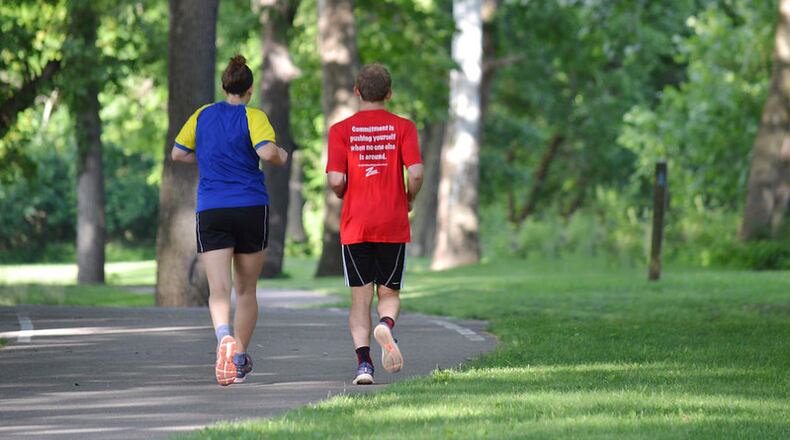Aaron Cringle, of Kettering Health Sports Medicine, weighs in on how to keep up your fitness routine safely all summer long.
Plenty of H2O
“The No. 1 thing to remember is to stay hydrated – before, during and after you work out,” Cringle said. “It’s most effective if you hydrate throughout the day, especially 2-to-3 hours before you exercise.”
Public Health - Dayton & Montgomery County recommends drinking more water than usual during periods of extreme heat and not waiting until you’re thirsty to drink. Drinking two to four cups of water every hour while working or exercising outside is advisable.
Dress the part
“Pay attention to the clothing you choose,” Cringle said. “Moisture wicking clothing is your best choice.”
Loose, lightweight, light-colored clothing is preferable and steering clear of cotton – which absorbs moisture – is recommended.
Be sun smart
Sunscreen is a must, even on cloudy days, but better yet, plan your workouts to avoid the strong mid-day sun.
“Exercise in the morning or evening when there isn’t as much direct sun,” Cringle said. “You can keep up your same routine but just shift the time of day. And find shady places for your walk or run instead of open areas.”
The Cleveland Clinic recommends changing your activity schedule if both the temperature and humidity are over 80 degrees Fahrenheit and 80 percent humidity as exercising in extreme heat adds stress to your heart.
Listen to your body
“Be aware of how your body is feeling,” Cringle said. “Adapt and adjust your workout – maybe reduce the intensity or length.”
Another option is changing up your routine entirely.
“Consider switching up your exercise,” he said. “Try swimming or yoga, something a little less intense.”
Extreme heat can negatively affect your health so it’s important to stay alert to signs of heat exhaustion or heat stroke.
Stay Safe this Summer
Public Health - Dayton & Montgomery County encourages all residents to learn the signs and first aid response for heat-related illness. For more information on extreme heat, visit http://www.phdmc.org/extremeheat.
Warning signs and symptoms vary but may include:
Heat Exhaustion
Symptoms: Heavy sweating; weakness; skin cold, pale, and clammy; weak pulse; fainting and vomiting
What You Should Do
* Move to a cooler location.
* Lie down and loosen your clothing.
* Apply cool, wet cloths to as much of your body as possible.
* Sip water.
* If you have vomited and it continues, seek medical attention immediately.
Heat Stroke
Symptoms: High body temperature (above 103 degrees); Hot, red, dry or moist skin; rapid and strong pulse; possible unconsciousness
What You Should Do
* Call 911 immediately – this is a medical emergency.
* Move the person to a cooler environment.
* Reduce the person’s body temperature with cool cloths or even a bath.
* Do NOT give fluids.
About the Author




